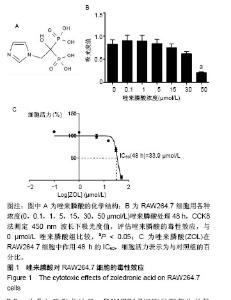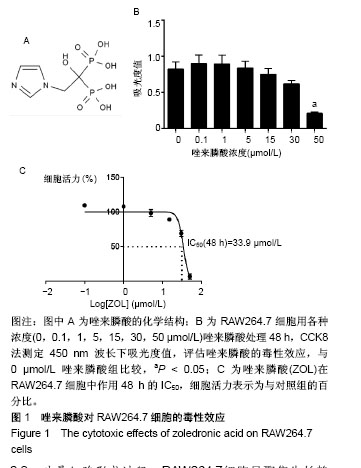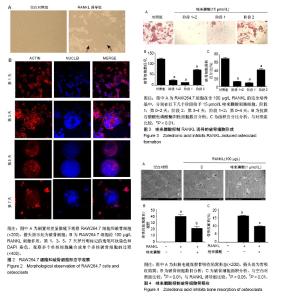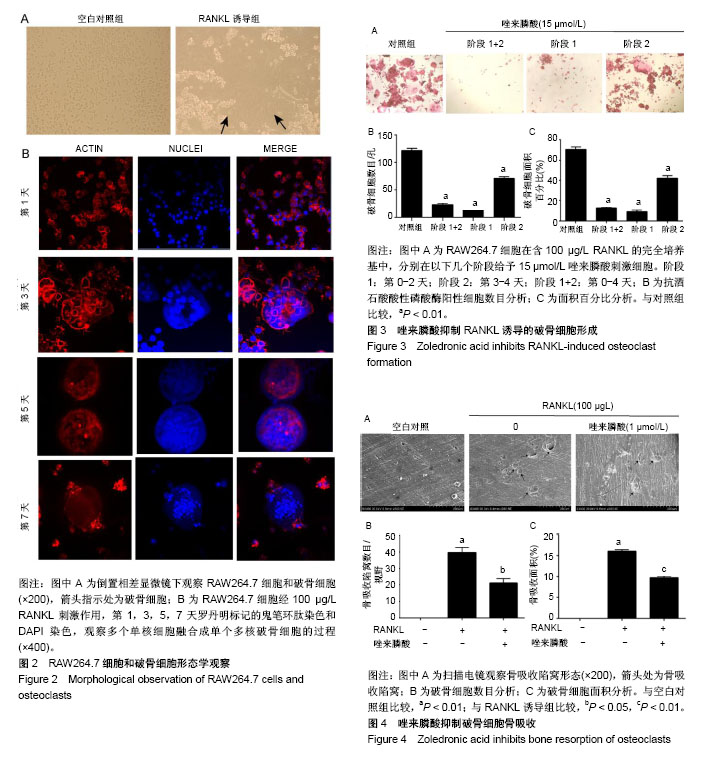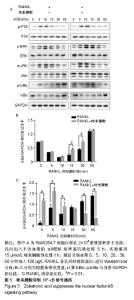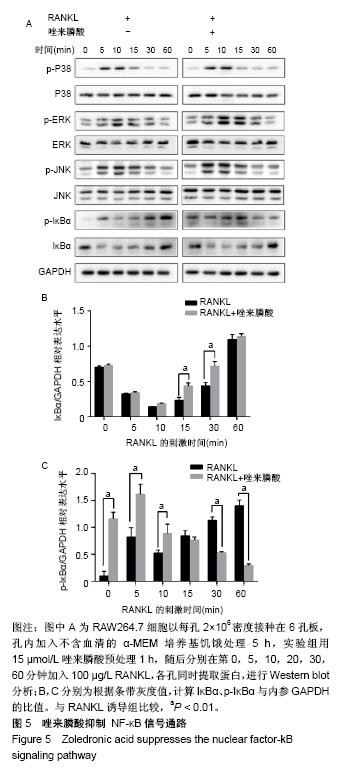| [1] Tai TW, Chen CY, Su FC, et al. Reactive oxygen species are required for zoledronic acid-induced apoptosis in osteoclast precursors and mature osteoclast-like cells. Sci Rep. 2017;7:44245.[2] Kanis JA. Diagnosis of osteoporosis and assessment of fracture risk. Lancet. 2002;359(9321):1929-1936.[3] Frenkel B, White W, Tuckermann J. Glucocorticoid-Induced Osteoporosis. Adv Exp Med Biol. 2015;872:179-215.[4] Nilsson AG. Bone research: an issue of maturity. J Intern Med. 2015; 277(6):626-629.[5] Ha H, Shim KS, Ma JY. Water extract of Uncaria sinensis suppresses RANKL-induced bone loss by attenuating osteoclast differentiation and bone resorption. Integr Med Res. 2017;6(4): 434-442.[6] Ishida M, Kitaura H, Kimura K, et al. Muramyl dipeptide enhances lipopolysaccharide-induced osteoclast formation and bone resorption through increased RANKL expression in stromal cells. J Immunol Res. 2015;2015:132765.[7] Duan L, de Vos P, Fan M, et al. Notch is activated in RANKL-induced osteoclast differentiation and resorption. Front Biosci. 2008;13:7064-7071.[8] Liou YM, Chan CL, Huang R, et al. Effect of l-caldesmon on osteoclastogenesis in RANKL-induced RAW264.7 cells. J Cell Physiol. 2018;233(9):6888-6901.[9] Mundy GR, Yoneda T, Hiraga T. Preclinical studies with zoledronic acid and other bisphosphonates: impact on the bone microenvironment. Semin Oncol. 2001;28(2 Suppl 6):35-44.[10] 黄晓林,姚超,程余婷,等. 唑来膦酸在骨质疏松状态下影响口腔种植体骨的结合[J].中国组织工程研究, 2018,22(18):2933-2938.[11] 郑振雨,朱明明,李春娟,等. 唑来膦酸对破骨细胞的分化及骨吸收功能的影响[J].中外健康文摘, 2013,10(36):55-56.[12] Jia X, Cheng J, Shen Z, et al. Zoledronic acid sensitizes breast cancer cells to fulvestrant via ERK/HIF-1 pathway inhibition in vivo. Mol Med Rep. 2018;17(4):5470-5476.[13] Zhu M, Zhu Y, Ni B, et al. Mesoporous silica nanoparticles/ hydroxyapatite composite coated implants to locally inhibit osteoclastic activity. ACS Appl Mater Interfaces. 2014;6(8): 5456-5466.[14] Benford HL, McGowan NW, Helfrich MH, et al. Visualization of bisphosphonate-induced caspase-3 activity in apoptotic osteoclasts in vitro. Bone. 2001;28(5):465-473.[15] Coxon FP, Helfrich MH, Van't Hof R, et al. Protein geranylgeranylation is required for osteoclast formation, function, and survival: inhibition by bisphosphonates and GGTI-298. J Bone Miner Res. 2000;15(8):1467-1476.[16] 吴骁伟,李少晗,曹文娟.唑来膦酸影响单个核细胞向破骨细胞分化及RANK表达的研究[J].中华全科医学, 2016, 14(10): 1644-1646.[17] Zaidi M. Skeletal remodeling in health and disease. Nat Med. 2007; 13(7):791-801.[18] Tanaka S. Emerging anti-osteoclast therapy for rheumatoid arthritis. J Orthop Sci. 2018;23(5):717-721.[19] Wen H, Liu Y, Li J, et al. Inhibitory effect and mechanism of 1,25-dihydroxy vitamin D3 on RANKL expression in fibroblast-like synoviocytes and osteoclast-like cell formation induced by IL-22 in rheumatoid arthritis. Clin Exp Rheumatol. 2018;36(5):798-805.[20] Chen PC, Cheng HC, Tang CH. CCN3 promotes prostate cancer bone metastasis by modulating the tumor-bone microenvironment through RANKL-dependent pathway. Carcinogenesis. 2013;34(7): 1669-1679.[21] 曾勇.蛋白质组学和网络分析鉴定与骨质疏松相关的基因和通路[D]. 北京:北京交通大学,2017.[22] 周龙,陈曦,罗宗平,等. C57BL/6小鼠骨髓单核细胞分离、培养、纯化及向破骨细胞的分化[J].中国组织工程研究, 2015, 19(6): 940-944.[23] 高军,由国平,刘陆, 等. 唑来膦酸治疗肺癌骨转移疼痛的评价[J]. 中国肿瘤临床与康复, 2015, 22(3): 374-375.[24] 王增,卢红阳,翁琳.唑来膦酸抗肿瘤作用的临床研究进展[J]. 中国临床药理学与治疗学, 2011, 16(8): 945-950.[25] Siddiqi MH, Siddiqi MZ, Kang S, et al. Inhibition of Osteoclast Differentiation by Ginsenoside Rg3 in RAW264.7 Cells via RANKL, JNK and p38 MAPK Pathways Through a Modulation of Cathepsin K: An In Silico and In Vitro Study. Phytother Res. 2015;29(9): 1286-1294.[26] Kim K, Kim JH, Kim I, et al. TRIM38 regulates NF-κB activation through TAB2 degradation in osteoclast and osteoblast differentiation. Bone. 2018;113:17-28.[27] Wang X, Chen B, Sun J, et al. Iron-induced oxidative stress stimulates osteoclast differentiation via NF-κB signaling pathway in mouse model. Metabolism. 2018;83:167-176.[28] Yang JH, Li B, Wu Q, et al. Echinocystic acid inhibits RANKL- induced osteoclastogenesis by regulating NF-κB and ERK signaling pathways. Biochem Biophys Res Commun. 2016;477(4): 673-677.[29] Lin TH, Tamaki Y, Pajarinen J, et al. Chronic inflammation in biomaterial-induced periprosthetic osteolysis: NF-κB as a therapeutic target. Acta Biomater. 2014;10(1):1-10. |
